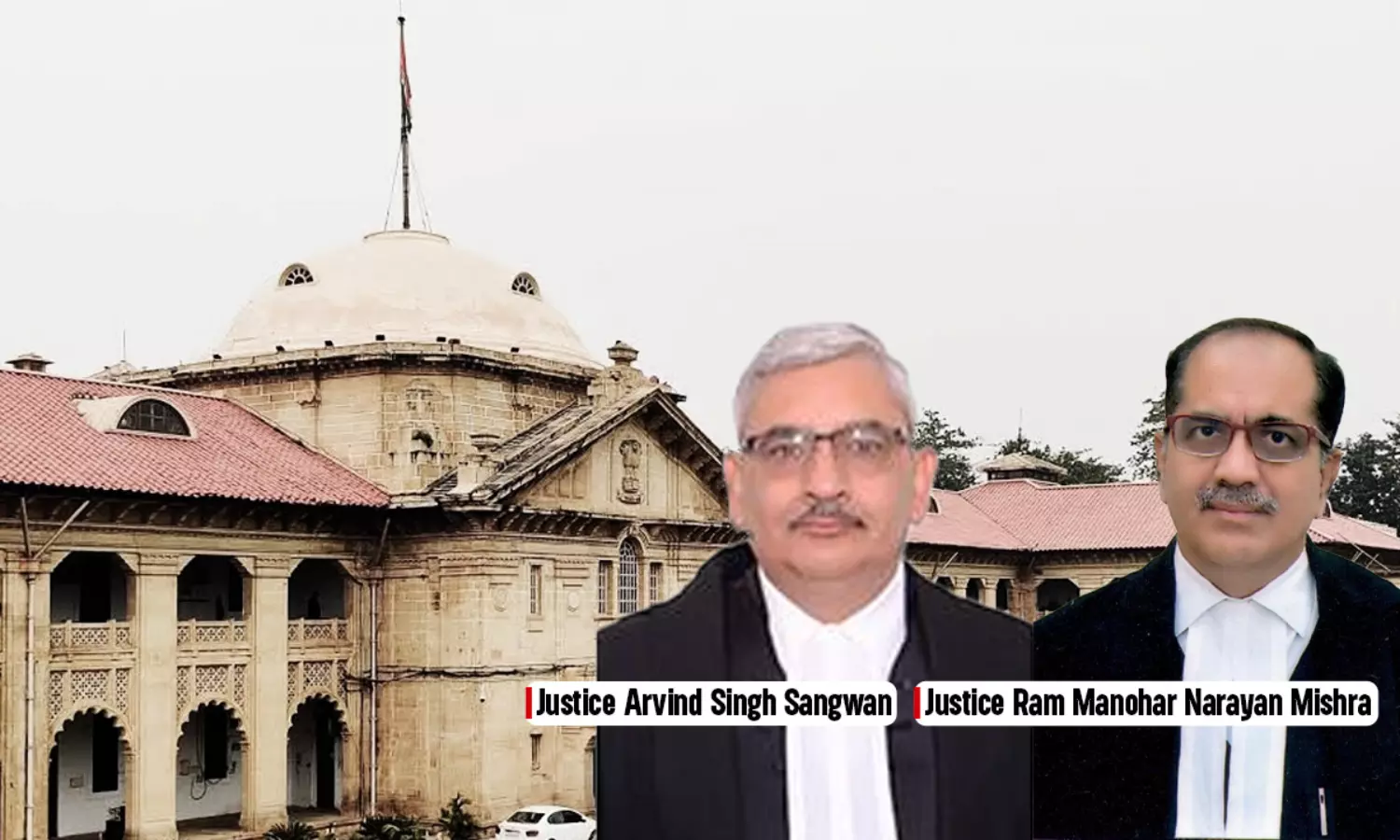'He Is 45, Has 2 Children & Wife To Support' : Allahabad HC Commutes Death Sentence Of Convict Who Killed Grandmother-In-Law

The Allahabad High Court last week commuted the death sentence of a 45-year-old convict who killed his wife's grandmother with a screwdriver in 2022 to life imprisonment as it noted that he has two children and a wife to support and that it was not a "rarest of rare" case. While answering the death reference in negative, a bench of Justice Arvind Singh Sangwan and Justice...
The Allahabad High Court last week commuted the death sentence of a 45-year-old convict who killed his wife's grandmother with a screwdriver in 2022 to life imprisonment as it noted that he has two children and a wife to support and that it was not a "rarest of rare" case.
While answering the death reference in negative, a bench of Justice Arvind Singh Sangwan and Justice Ram Manohar Narayan Mishra observed thus:
“…the finding of the trial court on order of sentence is modified as it is not a “rarest of rare” case, even though the accused has committed a grave offence of murder, therefore, we are of the opinion that the death penalty awarded to the appellant should be commuted to the life imprisonment.”
The prosecution's case in brief
As per the prosecution's case, on the day of the crime (April 1, 2022), only Kamla Devi (deceased) and her maid were at their home, as the other family members had gone out to watch a film.
At around 2:15 p.m., Tarun Goel (hereinafter 'convict') arrived. He went directly to her grandmother-in-law's room and asked the maid to prepare tea. After making the tea, he told her to leave it as he would serve himself. At 4:00 p.m., the convict called her (maid) to the room, and that is when she saw the deceased lying dead, and the Convict was holding a screwdriver.
The Convict then attacked her with a piece of mirror, causing injuries to her head, arms, and neck. She pleaded with him, asking why he was attacking her and what she had done wrong.
To this, the convict replied that he could not leave her alive since she was a witness. She fell unconscious after the attack, and the convict left with cash and gold and silver jewellery.
After regaining consciousness, she called out to the neighbour (one Jitendra Bhatiya,), who was on the roof. He told her to open the door, but since her hands were injured, she used her mouth to open it. Others then came inside and took her to the hospital.
Thereafter, the family members were informed, and they reached home and thereafter, an FIR was lodged.
After a thorough investigation, the convict was arrested, and the stolen valuables and cash were recovered from his home, where the police had gone to inquire about his involvement in crime.
Essentially, the IO, along with witnesses, reached the house of the convict and informed him that an FIR for committing the murder was registered and police had information that he was in possession of articles looted from the deceased.
Upon this, the accused told the I.O. that he had concealed the currency notes and jewellery under the bed and got it recovered.
The statement of the maid was crucial to the case. Forensic analysis of hair samples found in the deceased's hands matched the convict's DNA, incriminating him. In court, the convict admitted that he was in financial distress and that he was desperate to alleviate his debt.
No defence evidence was led. Thereafter, the trial court held the appellant guilty of an offence punishable under Section 302, 307, 394, 411 and 506 IPC and sentenced him to the death penalty.
The trial court referred the caee for confirmation of the death sentence. The appellant also filed a jail appeal.
Contentions raised before the High Court
At the outset, the counsel for the convict argued that the alleged recovery of the articles does not align with Section 27 of the Evidence Act, as when the police team came to the appellant's house, they already had information that the articles were to be recovered from the appellant.
It was argued that there was no independent witness to the recovery, and the informant was cited as the recovery memo witness. The police did not record a separate statement from the convict before the recovery or the preparation of the Panchayatnama. Instead, the recovery and arrest memos were combined into a joint memo, which is not legally permissible.
It was also submitted that while the convict was in police custody, forcibly his hair was taken, and a blood sample was also drawn, which raises doubt on the prosecution's version.
On the other hand, the Counsel for the state argued that the police and FSL Team promptly conducted the investigation and recovered the looted articles, weapons of offence, and blood-stained clothes of the accused within 48 hours of the incident. Therefore, the prosecution case was fully proved from the statements of PW-1, an informant, and PW-2, a witness.
It was also submitted that the blood sample was drawn by the CMO of Firozabad regarding the order of CJM. Therefore, the defence raised by the accused that his blood sample and hair were forcibly taken in the police station was, in fact, an incorrect statement.
It was also contended that PW-2 (maid) was a natural witness, as the appellant did not dispute her presence.
Regarding the non-examination of the neighbour in the case, the counsel for the state submitted that he was not cited as a witness; however, due to this, an adverse circumstance can't be raised against the prosecution, as being a neighbour, he was not interested in becoming a witness.
After hearing the counsel for the parties and on careful perusal and scrutinizing the entire evidence, the Court found no merits so far in the judgment of conviction of the appellant due to the following reasons:
- Neither the identity of the appellant nor his presence at the spot could be dispelled by the counsel for the appellant at the relevant time and place of occurrence.
- Her presence on the spot and the credibility of her statement were not sustainable as she is an injured witness. Her presence was never denied on the spot in the cross-examination. Being the maidservant of the deceased on the previous occasion proved that she was known to all the family members, including the appellant-convict.
- The ocular version of the PW-2/eye witness was duly corroborated by the medical evidence and the FSL report.
- The DNA of the appellant matched the hair recovered at the spot.
- When the appellant was causing injuries to her in self-defence, the deceased had caught hold of the hair of the appellant, which was found in her hand and matched with the blood sample of the appellant as per the FSL report.
- The preparation of a joint recovery and arrest memo is an irregularity on the part of the Investigating Officer, but it does not vitiate the prosecution case.
Against this backdrop, the conviction was upheld.
However, the Court commuted his death penalty to life imprisonment as it noted that the case did not fall in the “rarest of rare” category as it stressed that the appellant is aged about 45 years and has two children and a wife to support.
The Court also underscored that the trial court did not record any aggravating circumstances and did not scrutinise the appellant's case in light of mitigating circumstances.
With this, the appeal against the judgment of conviction was dismissed, however, the appeal qua order of sentence is modified, and the reference and jail appeal were disposed of accordingly.
Case title - Tarun Goel vs. State of U.P 2024 LiveLaw (AB) 424
Case citation : 2024 LiveLaw (AB) 424



